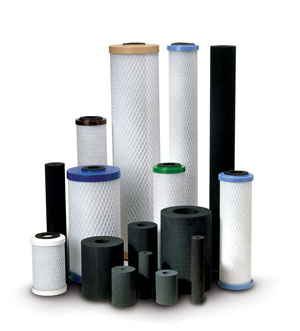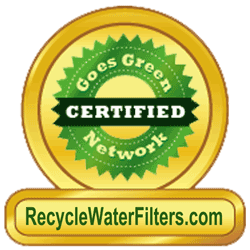Common Drinking Water Contaminents
PFAS Contamination of Drinking Water
What are PFAS?
The two most widely studied PFAS chemicals are perfluorooctanoic acid (PFOA) and perfluorooctane sulfonate (PFOS). These chemicals were voluntarily phased out of production in the United States but are still used on products that are imported into the USA.There is a large family of over 3,000 man-made chemicals that contain carbon, fluorine, and other elements that are used in the USA. Used since the 1940s in a variety of products including household products such as non-stick cookware, food packaging, stain and water repellants and firefighting foams. These chemicals accumulate in the environment and in your body over time.
How could I be exposed to PFAS?
People can be exposed to PFAS in a variety of ways. Eeating food or drinking water contaminated with PFAS, exposure at work at PFAS production facilities and by the release during normal use of household materials or cleaning products containing PFAS. It is estimated the drinking water supply for at least 16 million people is contaminated with PFAS.
What are the potential health hazzaeds of PFAS?
Research has shown potential health impacts of PFOA/PFOS exposure include low infant birth weight, decreased fertility, elevated cholesterol, abnormal thyroid hormone levels, liver inflammation, weakening of the immune system, and testicular and kidney cancer. The risks associated with many other PFAS chemicals are largely unknown. While scientists conduct research on the health impacts from other PFAS chemicals it is noted that the potential adverse effects may depend on factors such as the concentration of PFAS consumed and over what time span.
How can I tell if I have PFAS in my drinking water?
To have your water tested for PFAS, contact your state for a list of laboratories that are certified to test for PFAS using EPA Method 537. To search online for EPA Certified Labs for drinking water testing, go to EPA’s website: https://www.epa.gov/dwlabcert/contact-information-certification-programs-and-certified-laboratories-drinking-water
Are PFAS regulated in drinking water?
The Safe Drinking Water Act (SDWA) requires the EPA to identify contaminants to regulate in drinking water to protect public health. The National Primary Drinking Water Regulations include enforceable maximum contaminant levels (MCLs). Currently, there is no MCL for any PFAS chemicals.
How do I remove PFAS from my drinking water?
Water treatment technologies that have been independently tested to show that they are capable of removing PFAS from drinking water in your home include activated carbon filtration, reverse osmosis systems(RO), and anion exchange treatment. Reverse Osmosis offers the broadest and most poputar method.




